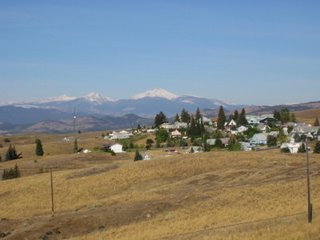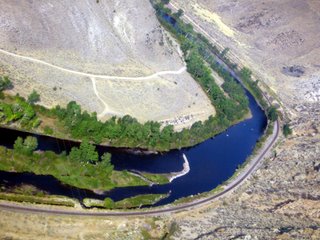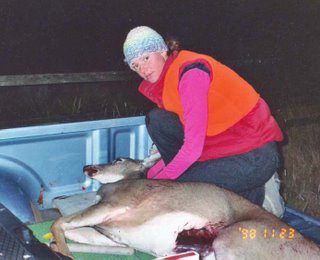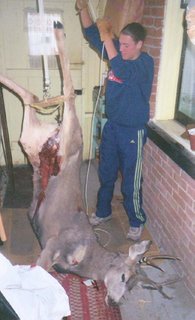
As we all know, you can’t always get what you want. But with Superfund, no matter how hard we try, we sometimes don’t get what we need, either.
Last week brought big news for Butte and the upper Clark Fork River: the Environmental Protection Agency released the long-awaited Record of Decision for the Butte Priority Soils superfund site. For more than a century, the Anaconda Company used our air, soils, and water as a free garbage dump.
[photo is of Walkerville looking west to the Pintler Wilderness; Walkerville is a small community north of Butte]
This site takes in the neighborhoods of the Butte hill – more than 4,000 residential homes – and Silver Bow Creek runs through it. Whatever happens with this remedy affects the health of thousands of residents, water quality in the major tributary of the upper Clark Fork River, and the economic vitality of a great old Montana city.
The press release just came out just last week, and no one has yet had time to fully digest the thousands of pages in the full decision—including the response to public comments. At this point, we are considering the main outline of the agency’s decision.
As you might expect with an EPA decision involving Arco-British Petroleum and the state of Montana – and engendering more than 1500 public comments – there is good news and bad news.
First, the good news: EPA will accelerate the schedule for testing and cleanup of toxic dust in our homes; and, the agency will require thorough monitoring of surface and ground water from reclaimed areas. The bad news? The notorious Parrot tailings will be left in place, where they can continue to bleed contamination into the ground water; and Arco-British Petroleum gets nearly full credit for all the work it has done to date. Much of that work involved covering up toxic mine waste – you know, cap it and fence it – and did not allow for public comment.
It is difficult to form a solid opinion of the EPA’s decision for Butte, because this remedy is very different from most. The Butte remedy involves a lot of adaptive management—that is, the agency will try things out, measure results, and (we hope) improve the remedy as needed. For example, although the Parrot Tailings will not be removed, there will be a lot of data gathering to try and figure out what the aquifer is doing. There will be a big effort to capture contaminated water for treatment in existing lagoons. If effluent continues to contaminate Silver Bow Creek, the agency will then require a new water treatment facility. Because even the possible new facility would use technology that has failed to remove arsenic at Warm Springs Ponds, this is not especially encouraging. We could well end up with more arsenic in downstream waters than what we have now.
This remedy is essentially the same as what the agency proposed a year ago. Then, it was valued at 39 to 56 million dollars. Now, using a new formula for its calculations, EPA values the remedy at 110 to 157 million dollars. Hmmm…. Talk about new math. I suppose there is psychological comfort in knowing Butte’s value has nearly tripled in the past year.
There is also huge uncertainty in how the state will react. Several state agencies were very critical of the original proposal. Montana even threatened a legal challenge where the remedy is unsupported by substantial evidence. Like the general public comment, EPA dismissed most of what the state had to say. Behind closed doors, there will be some tough wrangling before Montana signs off on a Consent Decree that allows remedy to go forward.
Toxic attic dust is a serious health issue for Butte residents. If Arco-British Petroleum and Butte government will agree to it, then all residential properties will be sampled for arsenic, lead, and mercury. Properties will be cleaned up “as required.” “As required” means that toxic attic dust will be removed—but only if homeowners plan to use the attic for living space, or if obvious problems such as deteriorating ceilings admit attic dust to the living space.
As any dog can tell you, this is not enough.
Montana Tech Professor Holly Peterson and her grad student Stacie Barry just completed a study of Butte dogs as biosamplers. “Trip the Remediation Dog” is of special interest to Butte residents. Trip lived in a contaminated house. Samples of Trip’s fur showed high and hazardous levels of lead and arsenic. Then, Trip’s owners decided to rid the house of that toxic material—primarily through removal of attic dust. Lo and behold, within a few months Trip’s hazard quotient declined to baseline levels.
Let me get an expert opinion about this. What do your say, Roly? - - -
There you have it: if removing toxic attic dust makes life safer for the pet dog, imagine what it can do for human owners and their children.
For more news about the Butte Priority Soils remedy and other Superfund issues, please check out CFRTAC’s website at
http://www.clarkforkoptions.org/.
From Butte to Missoula, we deserve a clean, healthy, and accessible Clark Fork River. It’s your river. Wade in, and help make the future.
Say good night, Roly: - - -


 [photo at left: diversion dam near Maiden Rock; note that the irrigation ditch is in the LOWER left portion of the photo, and the river channel is in the UPPER left portion of the photo.]
[photo at left: diversion dam near Maiden Rock; note that the irrigation ditch is in the LOWER left portion of the photo, and the river channel is in the UPPER left portion of the photo.] Photo: A mouse came to the end of its road, taken by a small hawk.
Photo: A mouse came to the end of its road, taken by a small hawk. set of wolf tracks that ran through a low pass.
set of wolf tracks that ran through a low pass.
 I've become a hunting mentor to a young lad or two or recently completed their hunter safetey course, have a strong desire to hunt, but do not have parents or family that hunt. [The photos here are of my daughter Emily.]
I've become a hunting mentor to a young lad or two or recently completed their hunter safetey course, have a strong desire to hunt, but do not have parents or family that hunt. [The photos here are of my daughter Emily.]


